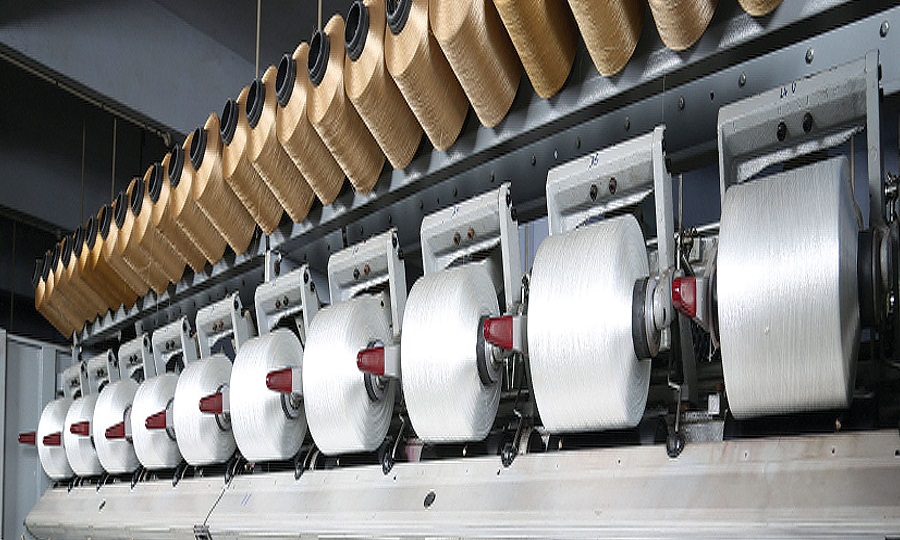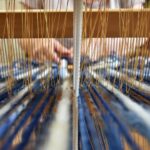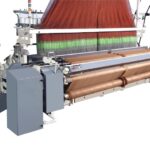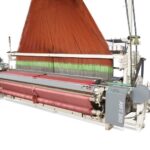Textile Full Dyeing Process
Textile Full Dyeing Process

The art of dyeing fabric involves imparting color onto textile materials, including yarn or finished fabric. This process dates back to at least 2600 BCE, with references found in historical texts. Initially, natural sources such as plants and animals were used to extract dyes and colors. However, from the mid-1800s, humans began developing synthetic dyes to expand the spectrum of available colors and increase the longevity of the dyeing process. There are a number of textile machinery manufacturers in India that offer best and efficient machineries to fulfil the textile manufacture needs and Weavetech is one amongst them. Weavetech is one of the best textile machinery manufacturers located in Gujarat which is a one stop solution for all your textile needs. With a quarter of a century of experience under its belt, Alidhra Weavetech is a prominent global entity that specializes in providing weaving and twisting machinery solutions. The organization has earned its reputation by offering innovative and locally developed designs that have been supplied to various parts of the world.
Textile Colorants
Dyes and pigments are colorants with distinct properties that greatly affect their application to textiles. Dyes are substances that color fabric and are typically used in a dissolved state, which then binds to the fabric. They are classified based on their chemical structure and usage, with each type of fibre requiring a specific dye. To ensure durability, dyes must possess the property of being “fast” or chemically stable, which means they should not wash away with soap and water or fade when exposed to sunlight. Dyes bind to fabrics through primary (ionic or covalent bonds) and secondary (hydrogen bonding) forces during the dyeing or printing process. Unlike dyes, pigments are insoluble and do not have an inherent attraction to textile fibres. If you are searching for textile machinery manufacturers in India, then you must get in touch with Weavetech as we have excellence and great expertise in this industry.
In the past, natural dyes sourced from various natural materials were the primary means of obtaining colors. However, with advancements in technology, synthetic dyes have gained more prominence due to their enhanced dependability, affordability, and ease of availability. Even so, certain natural dyes, including haematoxylin, carmine, and orcein, are still used today. Synthetic dyes, which are manufactured from either organic or inorganic substances, can be categorized into various types, including Direct, Acid, Basic, Reactive, Mordant, Metal complex, Vat, Sulfur, Disperse, or other types of dyes.
Dyeing Process
The techniques used for dyeing have remained relatively consistent over time and typically involve submerging textiles in a specialized solution containing dyes and other chemicals. Water is mainly used for cleaning, dyeing, applying auxiliary chemicals, and rinsing fabrics. The dyeing process comprises three primary stages, namely preparation, dyeing, and finishing, during which undesirable impurities are removed from the materials prior to the dyeing stage. To remove stains and natural color from fabrics, different cleaning methods can be employed such as using alkaline chemicals, detergents, or enzymes. Hydrogen peroxide or chlorine-based compounds are commonly used to bleach fabrics, especially when a white color is desired. Additionally, optical brightening agents may be added to enhance the whiteness of the textile before it is sold.
Textile dyeing is a process of coloring fabrics with water-based dyes, often performed under high temperatures and pressures. To ensure the dye evenly penetrates the fabric and resists fading, various chemical substances such as surfactants, acids, bases, electrolytes, carriers, leveling agents, chelating agents, emulsifying oils, and softening agents are added during the dyeing process. These chemical aids play a crucial role in achieving a uniform depth of color that is long-lasting and appropriate for the fabric’s intended use.
Dyeing- The Imparting Colour
Dyeing is the art of imparting color to textiles, including fabrics, fibers, and yarns, and has been practiced by humans for millennia. Dyes are available in powder, paste, crystal, and liquid dispersion forms and dissolve readily in aqueous solutions. During dyeing, the textile material is immersed in the dye solution, and the dye molecules bond to the fibers through absorption and diffusion, which are influenced by temperature and other factors. Hand or machine dyeing can be used based on the fabric type, and it’s crucial to select appropriate dyes for each fabric type. Weavetech is one of the best textile machinery manufacturers located in Gujarat and offering best quality of textile machineries.
Dyeing Methods
When it comes to dyeing textiles, the method used can either be batch or continuous. The optimal dyeing procedure depends on several factors such as the type of material being dyed (fiber, yarn, fabric, clothing), the type of fiber used, the desired quality of the dyed fabric, and the size of the dye batch. In batch dyeing, the textile material is loaded into a dyeing machine and allowed to reach equilibrium with the dye solution, whereby the dye molecules transfer from the solution into the fibers due to their affinity for the fibers. This process ensures that the textile is evenly and thoroughly dyed, resulting in high-quality dyed fabric.
If you are a textile manufacturer looking to improve the efficiency and productivity of your dyeing process, it’s time to consider upgrading your dyeing machinery. Investing in Weavetech dyeing machines can significantly improve the quality of your dyed fabric, reduce dyeing time, minimize wastage, and increase your production output. Don’t settle for outdated machinery that hinders your growth and profitability. Take action now and invest in advanced dyeing machinery to stay ahead of the competition and meet the ever-increasing demands of the textile industry.






